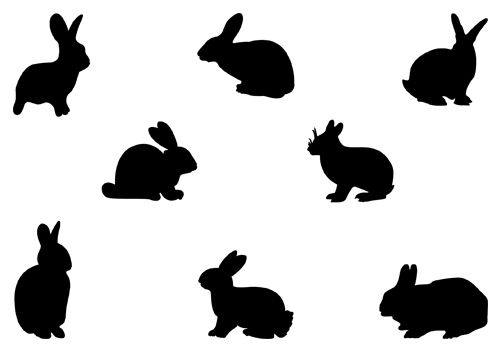Part 1
At the risk of drifting into the realm of technical writing tips, I’ll take a moment to examine the phenomenon of “head-hopping.” Loosely defined, the term refers to the practice, in a single scene, of beginning to tell a story from one character’s (say, one rabbit’s) point-of-view; then suddenly hopping to another rabbit’s point-of-view and back again and so forth. Such back-and-forth writing might give the reader whiplash.
Head-hopping tends to be a problem when an author is writing in third person (i.e., using character names and using ‘he,’ ‘she,’ and ‘they’ as pronouns. It’s sort of a classic ‘he said/she said’ situation which is made more complicated when each character’s internal thoughts and feelings are included. Here’s an example of head hopping in a single scene:
“This is boring,” Mrs. Rabbit said as her thoughts began to stray to what to fix for lunch.
“I couldn’t agree more,” said Mr. Rabbit, realizing he was unable to take his eyes from the computer screen.
In the above dialogue, the reader is initially in her head and then suddenly in his. Here’s an attempt to keep the point-of-view with the female character:
“This is boring,” Mrs. Rabbit said as her thoughts began to stray to what to fix for lunch. She heard her husband say he agreed, but she couldn’t help noticing that he seemed incapable of taking his eyes off the computer screen.
Part 2
At the risk of drifting even further into the realm of technical writing tips, I’ll take an even closer look at the phenomenon of “head-hopping.” Part 1 examined head-hopping from the head of one rabbit to another within a single shared scene and an attempt to resolve the hopping by pulling everything back into Mrs. Rabbit’s head.
Another approach might be to deal with the diverse points-of-view of Mr. and Mrs. Rabbit in separate paragraphs. For example:
“This is boring,” Mrs. Rabbit said as her thoughts began to stray to what to fix for lunch. Should it be lettuce again? she asked herself. Or would it be better to move on to parsley? Spinach is out of the question, of course, given the shortages. When,she wondered, might Old Man McGregor get around to starting a new spinach bed?
“I couldn’t agree more,” said Mr. Rabbit, hoping his reaffirming comment might put an end to their conversation. Reluctant to take his eyes off the computer screen, he shot a furtive glance in his wife’s direction, then returned his gaze to his work. Let’s hope she’ll keep her comments to a minimum, he found himself silently praying. I’ve got to finish this chapter or my editor will have my head on a pike. Hmmm—interesting image there. Perhaps I can use that concept in this chapter or save it for later. I’ll jot it down regardless.
Another way the issue of head-hopping might be resolved would be to place divergent points-of-view in completely separate chapters.


Head hopping drives me crazy. Rarely do I see it done well. Elizabeth George has pulled it off, but most can’t.
I agree. It’s a rare author who manage the hopping conundrum.
I like sticking with one person’s POV per chapter (or per scene, if that works better). While head-hopping used to be common in previous centuries, modern writing definitely requires (or at least STRONGLY encourages) reining in that practice and restricting the POV to one per scene. Thanks for the great examples and tips!
Thanks for your comments. It’s a puzzle which every author must solve and your suggestions sound very workable.